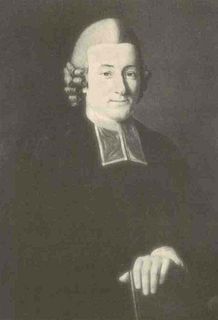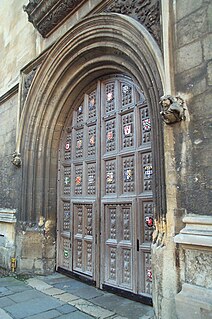Description
The codex contains lessons from the Gospels of John, Matthew, Luke lectionary (Evangelistarium), with lacunae. It is written in Greek minuscule letters, on 180 parchment leaves (21 cm by 15 cm), 1 column per page, 16-28 lines per page. [1] [2] It is a Palimpsest, the lower earlier text was written by uncial hand, it contains another lectionary (ℓ1954) and text of Mark 3:15-32; 5:16-31 from the 8th century, classified as Uncial 0134. [1] The earlier uncial text is difficult to read. The codex is in wretched condition. [3]

Gospel originally meant the Christian message itself, but in the 2nd century it came to be used for the books in which the message was set out. The four canonical gospels — Matthew, Mark, Luke and John — were probably written between AD 66 and 110, building on older sources and traditions, and each gospel has its own distinctive understanding of Jesus and his divine role. All four are anonymous, and it is almost certain that none were written by an eyewitness. They are the main source of information on the life of Jesus as searched for in the quest for the historical Jesus. Modern scholars are cautious of relying on them unquestioningly, but critical study attempts to distinguish the original ideas of Jesus from those of the later authors. Many non-canonical gospels were also written, all later than the four, and all, like them, advocating the particular theological views of their authors.

The Gospel of John is the fourth of the canonical gospels. The work is anonymous, although it identifies an unnamed "disciple whom Jesus loved" as the source of its traditions. It is closely related in style and content to the three Johannine epistles, and most scholars treat the four books, along with the Book of Revelation, as a single corpus of Johannine literature, albeit not from the same author.

The Gospel According to Matthew is the first book of the New Testament and one of the three synoptic gospels. It tells how the promised Messiah, Jesus, rejected by Israel, finally sends the disciples to preach the gospel to the whole world. Most scholars believe it was composed between AD 80 and 90, with a range of possibility between AD 70 to 110. The anonymous author was probably a male Jew, standing on the margin between traditional and non-traditional Jewish values, and familiar with technical legal aspects of scripture being debated in his time. Writing in a polished Semitic "synagogue Greek", he drew on three main sources: the Gospel of Mark, the hypothetical collection of sayings known as the Q source, and material unique to his own community, called the M source or "Special Matthew".
This page is based on this
Wikipedia article Text is available under the
CC BY-SA 4.0 license; additional terms may apply.
Images, videos and audio are available under their respective licenses.
Uncial 099, ε 47 (Soden); is a Greek uncial manuscript of the New Testament, assigned paleographically to the 7th-century.
Uncial 0105, ε 45 (Soden), is a Greek uncial manuscript of the New Testament. It is dated paleographically to the 10th-century. Formerly it was labelled by Wn.
Uncial 0116, ε 58 (Soden); is a Greek uncial manuscript of the New Testament, dated paleographically to the 8th-century. Formerly it was labelled at first by R, then by Wb (Tischendorf), because letter R was reserved for Codex Nitriensis.
Lectionary 17, designated by siglum ℓ 17. It is a Greek manuscript of the New Testament, on vellum leaves. Palaeographically it has been assigned to the 9th-century.
Lectionary 19, designated by siglum ℓ 19 is a Greek manuscript of the New Testament, written on vellum leaves. Palaeographically it has been assigned to the 13th-century.
Lectionary 21, designated by siglum ℓ 21. It is a Greek manuscript of the New Testament, on vellum leaves. Palaeographically it has been assigned to the 14th-century.
Lectionary 22, designated by siglum ℓ 22. It is a Greek manuscript of the New Testament, on vellum leaves. Palaeographically it has been assigned to the 14th-century.
Lectionary 23, designated by siglum ℓ 23. It is a Greek manuscript of the New Testament, on vellum leaves. Palaeographically it has been assigned to the 11th-century.
Lectionary 24, designated by siglum ℓ 24. It is a Greek manuscript of the New Testament, on vellum leaves, known as Codex Radziwiłł. Palaeographically it has been assigned to the 10th-century.
Lectionary 25, designated by siglum ℓ 25. It is a Greek manuscript of the New Testament, on vellum leaves. Palaeographically it has been assigned to the 13th-century.
Lectionary 28, designated by siglum ℓ 28, is a Greek manuscript of the New Testament, on parchment leaves. Palaeographically it has been assigned to the 13th-century.
Lectionary 32, designated by siglum ℓ 32. It is a Greek manuscript of the New Testament, on parchment leaves. Palaeographically it has been assigned to the 11th-century.
Lectionary 34, designated by siglum ℓ 34. It is a Greek manuscript of the New Testament, on parchment leaves. Palaeographically it has been assigned to the 9th-century. The manuscript is lacunose.
Lectionary 284, designated by siglum ℓ 284 is a Greek manuscript of the New Testament, on parchment. Palaeographically it has been assigned to the 10th century.
Scrivener labelled it as 163e.
Lectionary 286, designated by siglum ℓ 286 is a Greek manuscript of the New Testament, on parchment. Palaeographically it has been assigned to the 9th century.
Scrivener labelled it as 480e.
Codex Tischendorfianus V or Lectionary 293 (Gregory-Aland), designated by siglum ℓ 293 is a Greek manuscript of the New Testament, on parchment. Palaeographically it has been assigned to the 8th century.
Scrivener labelled it as 190e.
Lectionary 294 (Gregory-Aland), designated by siglum ℓ 294 is a Greek manuscript of the New Testament, on parchment. Palaeographically it has been assigned to the 9th or 10th century.

Lectionary 296 (Gregory-Aland), designated by siglum ℓ 296 is a Greek manuscript of the New Testament, on parchment. Palaeographically it has been assigned to the 10th century. The manuscript is very lacunose.
Lectionary 317 (Gregory-Aland), designated by siglum ℓ 317 is a Greek manuscript of the New Testament, on parchment. Palaeographically it has been assigned to the 9th century. The manuscript has survived in a fragmentary condition.








